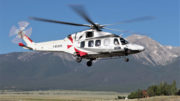The European Aviation Safety Agency (EASA) is clearing the Boeing 737 MAX to fly after nearly 2-year grounding. The Airworthiness Directive issued today concludes a meaningful and thorough Boeing 737 MAX Return To Service (RTS) process. While trust and confidence were severely undermined at the start of the recertification, the involvement of other parties – such as EASA and pilots – as well as the increased scrutiny from EU decision-makers has resulted in a more transparent and reassuring process.
“The reasons that led to the grounding of the Boeing 737 MAX were a clear example of the dangers of commercial pressure overriding safety considerations in the aviation industry,” says ECA President Otjan de Bruijn. “It was therefore crucial that EASA’s work in the B737 RTS has been thorough – and it is encouraging to see this reliability in a regulator. Aside from the technical lessons, the MAX debacle is certainly a valuable reminder about the importance of early safety warning signs and the precautionary approach, just as well as the importance of striking the right balance between cost and safety.”
Over the past 18 months, European pilots continuously engaged with EASA to make sure the operational perspective of the line pilots are well reflected in the review process. After the aircraft grounding, we asked for a full and independent review not only of the entire flight control system, which led to the two accident but also of all other aspects of aircraft design and of all factors leading to the two accidents. Pilots also required adequate (re)training and proper attention to human factors as part of the RTS process.
“EASA did not shy away from mandating time in the simulator for pilots and changes that go beyond simply MCAS training,” says Tanja Harter, ECA Technical Affairs Director. “One fundamentally wrong – and eventually fatal – idea had influenced the initial aircraft design and certification process: that pilot training is a burden, a cost, instead of being seen as an investment. It was important that the re-certification corrects this.”
Now, before being scheduled to fly, every B737 MAX pilot has to complete a specific B737 Return To Service training module. This includes knowledge requirements related to changes in the Aircraft Flight Manual as well as practical training in a MAX Full Flight Simulator.
“In the future line pilots should be more involved, bringing their operational expertise in the design and testing of new aircraft. We are ready and willing to work also with EASA on ensuring a safe oversight on certification of new and existing aircraft,” continues Tanja Harter, ECA Technical Affairs Director.
While the Airworthiness Directive addresses the immediate causes for the two deadly MAX crashes, the systemic, underlying flaws are still to be monitored closely. A highly dysfunctional, broken corporate & safety culture, lax regulatory safety oversight, and disproportionate commercial pressure remain on the list of threats to be addressed collectively by the aviation industry.
Source : ECA









Be the first to comment on "Pilots endorse EASA’s Airworthiness Directive on 737MAX"